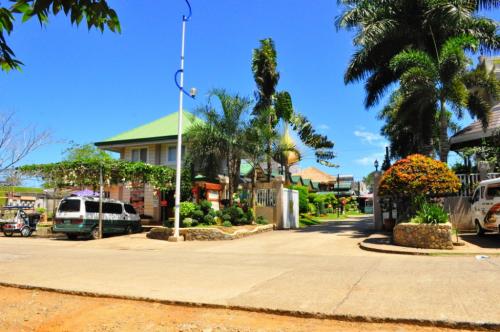Leyte
The Battle of Baluarte Marker is located in Leyte, Philippines. One of the most fascinating markers in the town is the Battle of Baluarte Marker, as it represents the sheer courage of the Filipino guerillas during the war. This is the site where the Filipino guerillas fought against the Japanese Imperial forces on August 24, 1944. It's fascinating as there were no Filipino casualties, while all of the Japanese forces were killed. Source: FlyPhilippines.com.ph
Kawit
The encounter in Binakayan is one in a two-pronged branch of offensive against Spaniards on November 9-11, 1896. The second encounter was in Kalero, Noveleta wherein hundreds of Spanish soldiers were killed by Filipinos. During the uprising, Gen. Gregoria Montoya was with the revolutionary forces. She is the Joan of Arc of the Philippines and hailed from Tabon, Kawit, Cavite. Two hundred fifty Spanish soldiers surrendered in "Polvorin," after a brief encounter with Filipino soldiers. It was the second victory of the Filipino Revolutionaries under the leadership of Gen. Emilio Aguinaldo. Source:Travelmart.net
Boac
Battle of Paye Marker is located in Boac, Marinduque, Philippines. This is another marker that serves as a reminder of the battle on July 31, 1900 between the Filipinos and the Americans. Despite inferior weapons, the Filipinos defeated the Americans. Source:Flyphilippines.com.phHoparound.net
Torrijos
Battle of Pulang Lupa Marker is located in Torrijos, Marinduque, Philippines. The marker stands at the site of the bloodiest battle fought in the island between the Philippine Revolutionary Forces and the Americans. The “Battle of Pulang Lupa” was the first known major battle won by the Filipinos over the Americans. The area is surrounded by dense vegetation making it an ideal place for camping. Source:Flyphilippines.com.phhoparound.net
Plaridel
Battle of Quingua Monument is located in Agnaya, Plaridel, Bulacan, Philippines. Historical, Heritage Filipinos are well-known to be courageous and freedom lovers. The people of Plaridel are no exception. The marker commemorates the historic Battle of Quingua (Plaridel at present) where the Filipinos triumphed over the American forces in their fight for freedom. Likewise, it also commemorates the death of Col. John Stotsenberg—a prominent figure of the Philippine-American war. Source:Bulacan.gov.ph
San Fernando (La Union)
Battle of San Fernando Marker is located in San Fernando, La Union, Philippines. Situated at the northwestern portion of the Town Plaza, inscribed is an account of how the Battle was started and won ebabling the establishment of the United States Army Base, Base M at Poro Point which was eventually used as a build up area for the projected invasion of Japan. San Fernando is 264 kilometers north of Manila. Source:Launionsurf.com
Bauang
Bauang Beach is located in Bauang, La Union Philippines. Beach lovers would love the fine grayish sands of Bauang Beach, with just a few kilometers away from San Fernando, La Union. Source: PhiltravelCenter.com
Balagtas
Bautista Mansion is located in Panginay, Balagtas, Bulacan, Philippines. The monument was built in honor of Francisco “Baltazar” Malolos City, Bulacan. Situated along the nostalgic Kamistisuhan Street, this ancestral mansion was visited by the national hero Dr. Jose Rizal to convince Triumvirate of the Ten Gentlemen of Malolos to join the La Liga Filipina. Source:Bulacan.gov.ph
Iloilo
In a small street across Jaro Plaza is a piece of Germany. Upon entering the restaurant one is easily transported to one of Germany's famous province, Bavaria, home of the Oktoberfest and Neuschwanstein castle built by King Ludwig II. This rustic German restauran offers typical German dishes, sausages, and steaks. The bar is loaded with a wide range of local and imported drinks, including excellent Weizenbier, a yeasty wheat beer from Germany.
Makati
Bayanihan Folk Arts Museum is located in Philippine Women's University, Taft Ave. Makati City, Philippines. This university museum focuses on showcasing a range of ethnological artifacts illustrating the cultural heritage of various ethnic groups of the Philippines. The museum also displays all the memorabilia of the Bayanihan's international tours. It also includes books and pamphlets on folk dance, music, costumes and handicrafts of other countries. There are also tribal weapons, authentic costumes, hand loomed fabrics, and rare 18th and 19th century prints showing costumes, people and places of earlier Philippine days. The collection still continues to grow. Source:Globalpinoy.com
